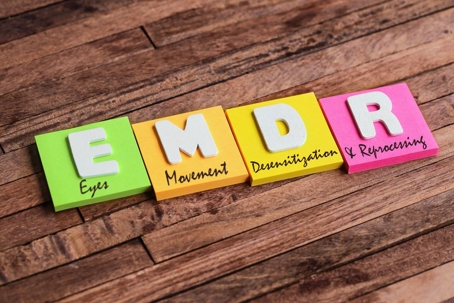Welcome to our informative webpage that delves into the world of Eye Movement Desensitization and Reprocessing (EMDR) therapy. If you or someone you know has experienced trauma or PTSD, this page will help you understand what EMDR is, how it works, and its potential benefits.
What is EMDR Therapy?
EMDR, or Eye Movement Desensitization and Reprocessing, is a psychotherapy approach that was originally developed by Francine Shapiro in the late 1980s. It has since gained widespread recognition as an effective method for treating individuals who have experienced trauma, especially post-traumatic stress disorder (PTSD).
Key Components of EMDR:
1. Bilateral Stimulation: EMDR involves bilateral stimulation, which can be achieved through various techniques, such as eye movements, hand-tapping, or auditory tones. This bilateral stimulation is thought to mimic the natural processing of memories during rapid eye movement (REM) sleep.
2. 8 Phases of EMDR: EMDR therapy typically consists of eight distinct phases, including history-taking, treatment planning, desensitization, installation, body scan, closure, reevaluation, and integration. These phases guide the therapist and client through the therapeutic process.
How Does EMDR Work?
EMDR works on the premise that traumatic experiences can get "stuck" in the brain, leading to symptoms like flashbacks, nightmares, and anxiety. This therapy aims to reprocess these traumatic memories, making them less distressing and allowing the individual to move forward in their life. The bilateral stimulation helps the brain process these memories by connecting the traumatic event with more adaptive information.
Benefits of EMDR Therapy:
1. Effective for Trauma: EMDR is known for its effectiveness in treating trauma and PTSD. It has been widely studied and has shown positive results in reducing trauma-related symptoms.
2. Faster Results: EMDR is often considered a more efficient therapy for trauma treatment, as it may produce results more rapidly than traditional talk therapy.
3. Reduced Reliving of Trauma: Many clients report a decrease in intrusive thoughts, flashbacks, and nightmares after EMDR therapy.
4. Improved Emotional Regulation: EMDR can help individuals gain better control over their emotions and reduce the emotional charge associated with traumatic memories.
Is EMDR Right for You?
EMDR therapy may be suitable for individuals who have experienced various forms of trauma, including but not limited to combat-related trauma, childhood abuse, natural disasters, and accidents. It's crucial to consult with a licensed therapist who specializes in EMDR to determine if this therapy is the right fit for your needs.
Conclusion
EMDR therapy is a highly regarded approach in the field of trauma treatment. It offers hope and healing for those who have experienced distressing events. If you're interested in exploring EMDR further, please reach out to at Decision Point Center. Remember that healing from trauma is possible, and EMDR is one of the tools that can help you on that journey.

